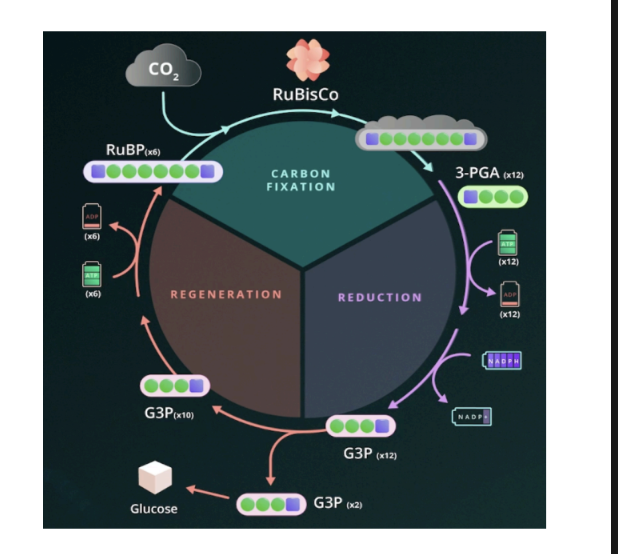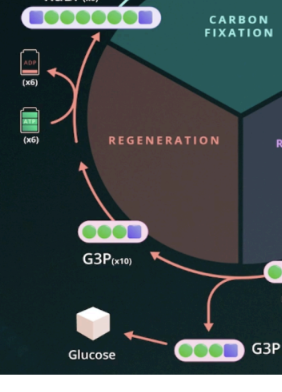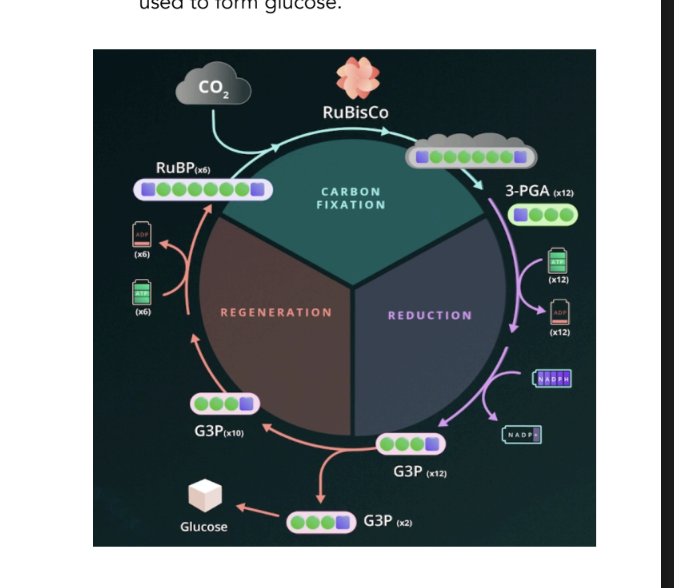6.3- Light Independent Reactions
1/11
There's no tags or description
Looks like no tags are added yet.
Name | Mastery | Learn | Test | Matching | Spaced |
|---|
No study sessions yet.
12 Terms
Light Independent Reactions
(aka Dark Reactions/Calvin
Cycle): do not directly use sunlight, but still need the
ATP and NADPH formed by the light reactions
Where do Light Independent Reactions Take place?
In the stroma of the chloroplast.
Function of Light Independent Reaction
• Converts CO2 ➞ glucose
3 phases of the Calvin Cycle:
Carbon fixation
Reduction
Regeneration
Carbon Fixation
Inorganic carbon (atmospheric CO2) is converted into organic compounds (glucose).
Performed by autotrophs (plants, photosynthetic organisms, chemoautotrophic prokaryotes).
Reduction
steps that use up ATP and NADPH from light reactions.
Regeneration
intermediates are regenerated so cycle can continue.
Important Steps of Calvin Cycle:
RuBisCo combines CO2 and RuBP, forming a 6- carboN intermediate.
RuBisCo is the most abundant enzyme on Earth.
6-carbon intermediate is broken into two 3-carbon molecules (PGA).
PGA is phosphorylated (using ATP) and reduced (using NADPH) to G3P
Most G3P is converted back to RuBP (using ATP), but excess G3P is used to make glucose.
1 glucose molecule is produced per 6 turns of the cycle 12 G3P are formed every 6 turns, 10 G3P are used to reform RuBP and 2 G3P are used to form glucose.

1st step Calvin Cycle
RuBisCo combines CO2 and RuBP, forming a 6- carboN intermediate.
RuBisCo is the most abundant enzyme on Earth.

2nd step Calvin Cycle
6-carbon intermediate is broken into two 3-carbon molecules (PGA)

3rd step Calvin Cycle
PGA is phosphorylated (using ATP) and reduced (using NADPH) to G3P

4th step Calvin Cycle
Most G3P is converted back to RuBP (using ATP), but excess G3P is used to make glucose.
1 glucose molecule is produced per 6 turns of the cycle → 12 G3P are formed every 6 turns, 10 G3P are used to reform RuBP and 2 G3P are used to form glucose.